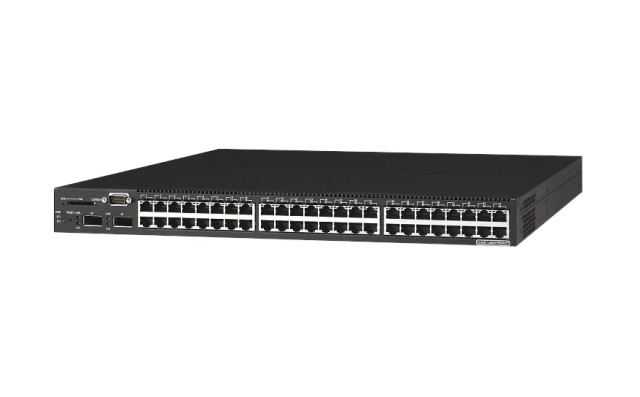In the world of IT Hardware and Computer Hardware, one of the most essential devices for ensuring connectivity is the Networking Hub. While modern enterprises often rely on advanced switches and routers, hubs still play a significant role in small-scale networks, educational environments, and legacy systems. A Networking Hub functions as a central connection point that links multiple computers or devices in a Local Area Network (LAN). It works on a simple principle: when a signal arrives at one port, the hub broadcasts it to all other ports, ensuring communication across connected systems.
Understanding the importance of Networking Hubs requires a closer look at their design, functionality, and role within the broader IT infrastructure. Businesses and individuals continue to utilize hubs because of their affordability, simplicity, and ability to provide a straightforward solution for basic network setups.
The Evolution of Networking Hubs in IT Hardware
Networking has come a long way, and Networking Hubs represent one of the earliest solutions that connected multiple systems. During the early days of computer networking, hubs provided a cost-effective and efficient way to share data and resources. Before the arrival of intelligent switches and wireless solutions, Computer Hardware networks largely depended on hubs to link workstations, printers, and servers in offices and institutions.
Although today’s IT environments are more likely to adopt switches and routers for advanced performance, the Networking Hub remains relevant for specific use cases. Many organizations still keep hubs as backup connectivity devices due to their reliability and plug-and-play nature. This historical evolution highlights how hubs laid the foundation for today’s complex and high-speed networks.
How Networking Hubs Work
A Networking Hub operates at the physical layer (Layer 1) of the OSI model. When data enters the hub from one port, the device transmits the same data to all other ports without identifying the intended recipient. This broadcast nature is what differentiates hubs from switches. Unlike switches that direct data specifically to the target device, hubs distribute data across the entire network segment.
For small networks or controlled environments, this simplicity can be an advantage. It ensures that all connected devices receive identical signals, reducing setup complexities. However, it also leads to network congestion when multiple devices attempt to transmit data simultaneously. This limitation underscores why Networking Hubs are often used for basic connectivity rather than high-performance networking.
Types of Networking Hubs
Over the years, several types of Networking Hubs have emerged, each serving different requirements in IT Hardware and Computer Hardware environments.
Passive Hubs
A passive hub functions as a simple signal distributor. It does not amplify or regenerate signals, making it suitable for small environments with short cable lengths.
Active Hubs
Active hubs boost or regenerate incoming signals before forwarding them to other devices. This feature reduces signal degradation and allows larger networks to function without data loss.
Intelligent Hubs
These hubs offer advanced features like remote management, network monitoring, and limited diagnostic functions. Intelligent hubs bridge the gap between traditional hubs and modern switches, making them more adaptable in certain IT setups.
By selecting the right hub type, businesses can balance cost, performance, and functionality according to their specific networking needs.
Importance of Networking Hubs in Computer Hardware
The role of Networking Hubs in Computer Hardware cannot be overlooked. They serve as foundational devices in networking laboratories, IT training centers, and small business networks. Their affordability and ease of installation make them ideal for environments where advanced networking features are not necessary.
In addition, Networking Hubs help IT administrators test connectivity, troubleshoot cabling issues, and establish temporary network setups. Their plug-and-play architecture minimizes configuration requirements, making them accessible even to users with limited networking knowledge. For learners and professionals working with IT Hardware, hubs offer an excellent starting point to understand the basics of data transmission and network structures.
Networking Hubs vs. Switches and Routers
While Networking Hubs play a crucial role in Computer Hardware setups, it is important to distinguish them from switches and routers.
- A hub broadcasts data to all devices, leading to potential data collisions.
- A switch directs data to the intended device, improving performance and reducing collisions.
- A router manages traffic between different networks, ensuring smooth communication across wide areas.
This comparison highlights why switches and routers dominate modern enterprise networks. However, hubs still hold their ground as simple, cost-effective solutions for small-scale connectivity needs.
Advantages of Networking Hubs
The continued use of Networking Hubs in certain IT environments is largely due to their advantages.
- Cost-Effectiveness: Hubs are among the most affordable networking devices.
- Simplicity: Their plug-and-play nature allows easy installation without specialized skills.
- Compatibility: Hubs work with a wide range of Computer Hardware devices and network standards.
- Accessibility: They provide an easy entry point for learners exploring IT networking.
These benefits demonstrate why hubs remain relevant despite the dominance of more advanced networking devices.
Limitations of Networking Hubs
Despite their advantages, Networking Hubs come with certain limitations. Their broadcast-based data transfer leads to reduced efficiency and slower performance in larger networks. Bandwidth is shared among all connected devices, which can create bottlenecks when multiple systems are transmitting simultaneously.
Additionally, hubs do not offer security features, making them unsuitable for sensitive environments where data privacy is a concern. For this reason, IT professionals often recommend switches or routers for modern business networks. Nonetheless, for basic connectivity, Networking Hubs continue to provide a straightforward solution.
Role of Networking Hubs in IT Hardware Training and Education
In educational institutions and training centers, Networking Hubs hold significant value. Aspiring IT professionals use hubs to understand fundamental concepts like signal broadcasting, collision domains, and physical layer networking. Their low cost makes them ideal for training environments where large-scale deployment of expensive switches and routers is impractical.
Moreover, hubs help learners grasp the differences between various Computer Hardware devices within networks. By experimenting with hubs, switches, and routers, students gain practical experience that prepares them for real-world IT challenges.
Networking Hubs in Legacy Systems
Many older IT infrastructures still rely on Networking Hubs. While modern upgrades often replace hubs with advanced devices, legacy networks sometimes preserve hubs for compatibility reasons. Businesses operating legacy systems may find it easier to maintain hubs rather than overhaul their entire IT infrastructure.
This ongoing use highlights the adaptability of Networking Hubs within different Computer Hardware environments. Even as technology advances, hubs continue to function as reliable and cost-efficient connectivity tools.
Networking Hubs in Small Businesses
For small businesses with limited networking requirements, Networking Hubs provide an affordable solution. They connect a handful of computers, printers, and other devices within a local office. While these setups may not demand the high speeds of enterprise-grade switches, they require stable and straightforward connectivity—something hubs are well-suited to deliver.
By integrating hubs into their Computer Hardware setup, small businesses can manage internal communication effectively without overspending on advanced IT hardware.
Networking Hubs and IT Hardware Maintenance
Maintaining Networking Hubs is relatively simple compared to other IT devices. They require minimal configuration, occasional cleaning, and basic cable management. Since hubs do not involve complex firmware or software, the risk of technical issues is reduced. This low-maintenance nature makes them reliable devices in Computer Hardware ecosystems where stability is a priority.
Future of Networking Hubs in IT Hardware
While the future of networking largely focuses on intelligent switches, routers, and wireless systems, hubs still hold a niche market. They remain important for educational use, temporary setups, and legacy compatibility. In addition, the concept of hubs continues to influence new technologies, as many network devices borrow the hub’s role of centralizing communication.
For IT professionals and Computer Hardware enthusiasts, understanding the relevance of hubs helps in appreciating the historical and foundational aspects of network evolution.
Conclusion
Networking Hubs may not dominate modern enterprise IT infrastructures, but their importance in the history of networking is undeniable. They continue to play a role in IT Hardware and Computer Hardware setups, especially in educational, small business, and legacy environments. Their affordability, simplicity, and reliability ensure they remain part of the broader networking landscape.
Whether used as a learning tool or as a backup device, Networking Hubs symbolize the foundation upon which modern networking technologies were built. For IT professionals, understanding hubs is not just about working with outdated equipment—it’s about recognizing the devices that made today’s high-speed networks possible.






